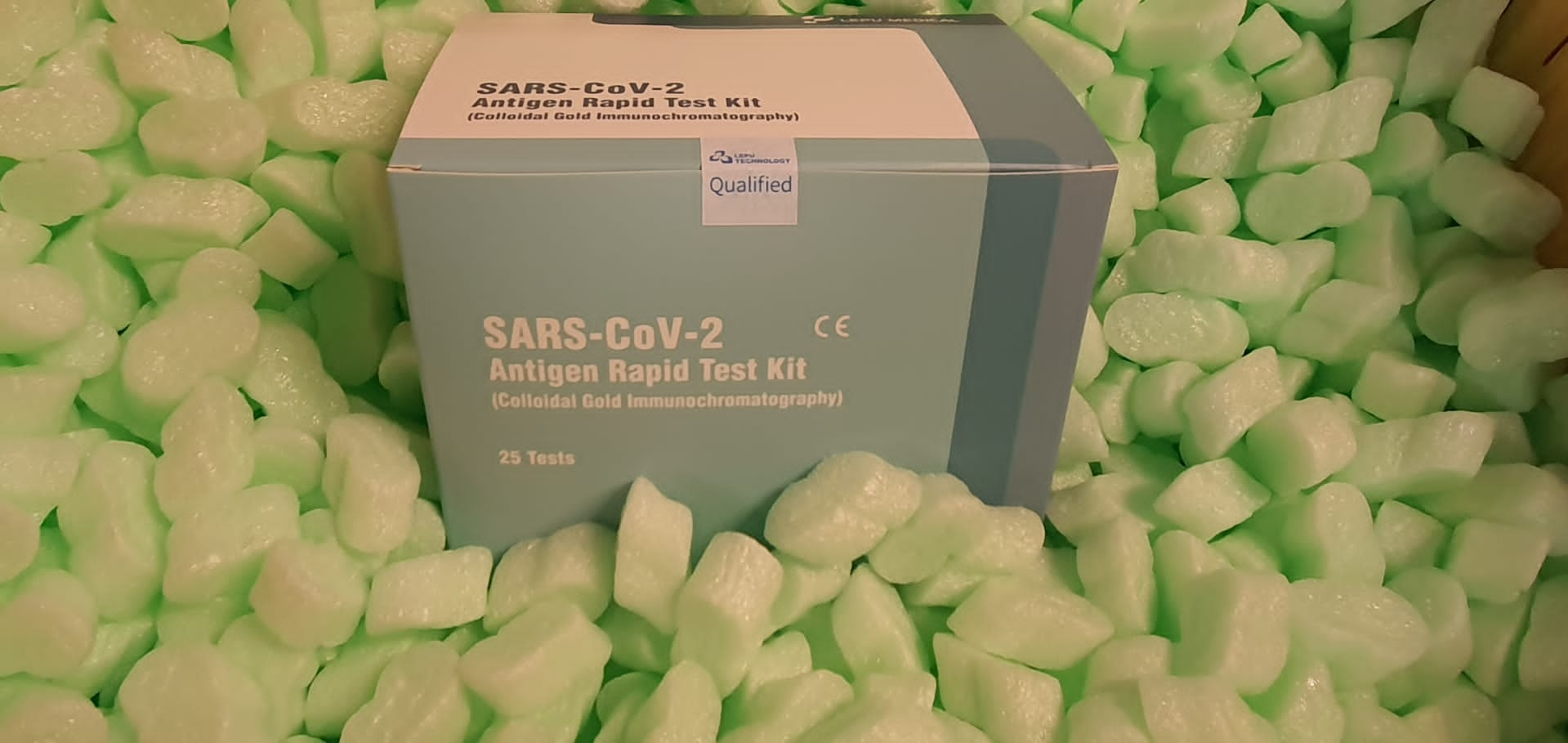Volumetric imaging of samples utilizing fluorescence microscopy performs an vital position in varied fields together with bodily, medical and life sciences. Here we report a deep learning-based volumetric picture inference framework that makes use of 2D pictures which are sparsely captured by a typical wide-field fluorescence microscope at arbitrary axial positions throughout the pattern quantity. Through a recurrent convolutional neural community, which we time period as Recurrent-MZ, 2D fluorescence data from a couple of axial planes throughout the pattern is explicitly integrated to digitally reconstruct the pattern quantity over an prolonged depth-of-field. Using experiments on C. elegans and nanobead samples,
Recurrent-MZ is demonstrated to considerably improve the depth-of-field of a 63×/1.4NA goal lens, additionally offering a 30-fold discount within the variety of axial scans required to picture the identical pattern quantity. We additional illustrated the generalization of this recurrent community for 3D imaging by displaying its resilience to various imaging situations, together with e.g., totally different sequences of enter pictures, masking varied axial permutations and unknown axial positioning errors. We additionally demonstrated wide-field to confocal cross-modality picture transformations utilizing
Recurrent-MZ framework and carried out 3D picture reconstruction of a pattern utilizing a couple of wide-field 2D fluorescence pictures as enter, matching confocal microscopy pictures of the identical pattern quantity. Recurrent-MZ demonstrates the primary software of recurrent neural networks in microscopic picture reconstruction and gives a versatile and speedy volumetric imaging framework, overcoming the restrictions of present 3D scanning microscopy instruments. Palawan is the malaria-endemic province with the best prevalence of malaria within the Philippines, and microscopists (group well being staff) have been allowed to ship early analysis and immediate remedy of malaria all through the province since 1999.
To enhance the standard of care, the current mixed-methods research tried to determine the components related to satisfaction of sufferers in Palawan with their microscopists by analyzing the sufferers’ views. First, a quantitative cross-sectional research was performed amongst 48 ex-patients and their 9 microscopists. Ex-patients have been requested about their satisfaction with care, and microscopists have been requested about their job satisfaction and talent. Structural equation modeling was performed for information evaluation.
Super-resolving Microscopy in Neuroscience
Fluorescence imaging strategies play a pivotal position in our understanding of the nervous system. The emergence of varied super-resolution microscopy strategies and specialised fluorescent probes allows direct perception into neuronal construction and protein preparations in mobile subcompartments with up to now unmatched decision. Super-resolving visualization strategies in neurons unveil a novel understanding of cytoskeletal composition, distribution, motility, and signaling of membrane proteins, subsynaptic construction and performance, and neuron-glia interplay. Well-defined molecular targets in autoimmune and neurodegenerative.
Application of super-resolution microscopy in human mind samples and for testing scientific biomarkers remains to be in its infancy however opens new alternatives for translational analysis in neurology and neuroscience. In this assessment, we describe how super-resolving microscopy has improved our understanding of neuronal and mind perform and dysfunction within the final 20 years. Second, a qualitative cross-sectional research was carried out utilizing narrative interviews. Data have been analyzed utilizing the NVivo 10 software program program. As a end result, each research revealed excessive affected person satisfaction with microscopists.
The quantitative research confirmed that ex-patients’ satisfaction with their microscopists was independently enhanced by two components: excessive means in malaria microscopic commentary and low family wealth of the sufferers. Particularly, particular subpopulations (these with decrease family wealth, comparatively previous individuals, and ethnic minorities) have been extra glad with the microscopists’ care. The qualitative research strengthens this discovering by displaying that their microscopists provided immediate and exact analysis and efficient remedy at no cost. In conclusion, microscopists have been proven to have an vital position in narrowing the disparities in malaria care in Palawan.
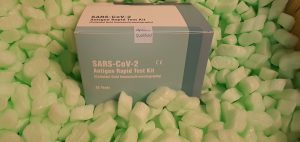
Investigation of plant leaf-derived graphene quantum dot clusters through magnetic drive microscopy
Magnetic drive microscopy (MFM) is utilized to characterize the magnetic second in nanostructured plant leaf-derived graphene quantum dot clusters (GQDCs). The MFM sign reveals that the magnetic response of the GQDCs is dependent upon the peak and width of the GQDCs. However, particular person GQDs, and smaller clusters with widths of lower than 20 nm, haven’t proven any observable magnetic sign. Importantly, experimental analyses recommend that the magnetic sign of GQDCs distributed in a aircraft could be successfully detected at room temperature. These outcomes may pave the best way for future graphene-based magnetic storage media and spin manipulation quantum gadgets.
In three animals (rats), intracellular/extracellular distribution of Evans blue (EB) in cerebral cortex and hippocampus of each hemispheres was revealed by injection of EB into the interior carotid artery (ICA) in hyperhydrated rats (water intoxication, WI). A complete of eight experimental rats have been used for the MRI research. The animals have been scanned earlier than WI, then the experimental mind edema was induced by WI and MR scanning was carried out at day 1 and day eight after WI. Besides customary T2-weighted imaging an obvious diffusion coefficient (ADC) and transverse rest time (T2) have been evaluated.
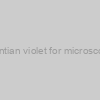 Gentian violet for microscopy |
|
GRM6354-25G |
EWC Diagnostics |
1 unit |
EUR 6.93 |
|
Description: Gentian violet for microscopy |
) Lugols Iodine Solution (for Microscopy) |
|
RRSP84-D |
Atom Scientific |
500ml |
EUR 7.33 |
) Lugols Iodine Solution (for Microscopy) |
|
RRSP84-E |
Atom Scientific |
1L |
EUR 11.32 |
) Lugols Iodine Solution (for Microscopy) |
|
RRSP84-F |
Atom Scientific |
2.5L |
EUR 19.31 |
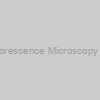 Fluorescence Microscopy Aid |
|
4400 |
Virostat |
3 ml |
EUR 216.6 |
|
Description: This is Counter - Stain/Blocking Diluent with optimal formula for preparaiton of final dilutions of FITC conjugate prior to use in FA procedures. |
) Exosome electron microscopy imaging (EM) |
|
S109 |
101Bio |
- |
EUR 600 |
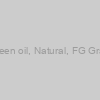 Wintergreen oil, Natural, FG Grade 99% |
|
W00025 |
Pfaltz & Bauer |
25G |
EUR 297 |
, Red Fluorescence) EZClick? Stearoylated Protein Assay Kit (FACS/Microscopy), Red Fluorescence |
|
K418-100 |
Biovision |
each |
EUR 588 |
, Red Fluorescence) EZClick? Global RNA Synthesis Assay Kit (FACS/Microscopy), Red Fluorescence |
|
K462-100 |
Biovision |
each |
EUR 639.6 |
, Red Fluorescence) EZClick? Global RNA Synthesis Assay Kit (FACS/Microscopy), Red Fluorescence |
|
K718-100 |
Biovision |
each |
EUR 639.6 |
, Green Fluorescence) EZClick? Stearoylated Protein Assay Kit (FACS/Microscopy), Green Fluorescence |
|
K453-100 |
Biovision |
each |
EUR 588 |
, Red Fluorescence) EZClick? Palmitoylated Protein Assay Kit (FACS/Microscopy), Red Fluorescence |
|
K416-100 |
Biovision |
each |
EUR 588 |
, Green Fluorescence) EZClick? Myristoylated Protein Assay Kit (FACS/Microscopy), Green Fluorescence |
|
K497-100 |
Biovision |
each |
EUR 588 |
, Green Fluorescence) EZClick? Palmitoylated Protein Assay Kit (FACS/Microscopy), Green Fluorescence |
|
K452-100 |
Biovision |
each |
EUR 588 |
, Red Fluorescence) EZClick? Global Protein Synthesis Assay Kit (FACS/Microscopy), Red Fluorescence |
|
K715-100 |
Biovision |
each |
EUR 660 |
, Green Fluorescence) EZClick? Global Protein Synthesis Assay Kit (FACS/Microscopy), Green Fluorescence |
|
K459-100 |
Biovision |
each |
EUR 660 |
, Red Fluorescence) EZClick? Global Phospholipid Synthesis Assay Kit (FACS/Microscopy), Red Fluorescence |
|
K717-100 |
Biovision |
each |
EUR 614.4 |
, Red Fluorescence) EZClick? EdU Cell Proliferation/DNA Synthesis Kit (FACS/Microscopy), Red Fluorescence |
|
K946-100 |
Biovision |
each |
EUR 639.6 |
) EZClick? O-GlcNAc Modified Glycoprotein Assay Kit (FACS/Microscopy, Green Fluorescence) |
|
K714-100 |
Biovision |
each |
EUR 614.4 |
) EZClick? O-GalNAc Modified Glycoprotein Assay Kit (FACS/Microscopy, Green Fluorescence) |
|
K560-100 |
Biovision |
each |
EUR 588 |
 Modified Glycoprotein Assay Kit (FACS/Microscopy, Green Fluorescence)) EZClickTM Fucose (FucAz) Modified Glycoprotein Assay Kit (FACS/Microscopy, Green Fluorescence) |
|
K592-100 |
Biovision |
each |
EUR 588 |
 Modified Glycoprotein Assay Kit (FACS/Microscopy, Green Fluorescence)) EZClick? Sialic Acid (ManAz) Modified Glycoprotein Assay Kit (FACS/Microscopy, Green Fluorescence) |
|
K441-100 |
Biovision |
each |
EUR 588 |
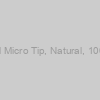 0.1-10ul Micro Tip, Natural, 1000/Pack |
|
FT225 |
Bio Basic |
1PK, 1000UNIT |
EUR 101.71 |
|
|
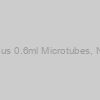 Olympus 0.6ml Microtubes, Natural |
|
24-272 |
Genesee Scientific |
Box of 1000 Tubes/Unit |
EUR 24.92 |
|
Description: Polypropylene, Nonsterile |
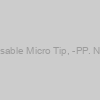 Disposable Micro Tip, -PP. Natural |
|
LA271-1X500NO |
EWC Diagnostics |
1 unit |
EUR 111.23 |
|
Description: Disposable Micro Tip, -PP. Natural |
 Disposable Micro Tip, -PP. Natural |
|
LA288-1X500NO |
EWC Diagnostics |
1 unit |
EUR 26.75 |
|
Description: Disposable Micro Tip, -PP. Natural |
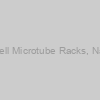 50-Well Microtube Racks, Natural |
|
R022-N |
Bio Basic |
1 UNIT |
EUR 63.66 |
|
|
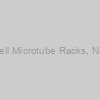 40-Well Microtube Racks, Natural |
|
R027-N |
Bio Basic |
1 UNIT |
EUR 63.66 |
|
|
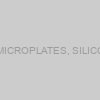 SEALING MAT, FOR 384 WELL PCR MICROPLATES, SILICONE, NATURAL, NONSTERILE, BULK |
|
AM-384-PCR-RD |
CORNING |
10/pk |
EUR 196.8 |
|
Description: Sealing Products; Sealing mats - Axygen |
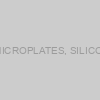 SEALING MAT, FOR 96 WELL PCR MICROPLATES, SILICONE, NATURAL, NONSTERILE, BULK |
|
AM-96-PCR-RD |
CORNING |
10/pk |
EUR 196.8 |
|
Description: Sealing Products; Sealing mats - Axygen |
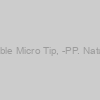 Disposable Micro Tip, -PP. Natural colo |
|
LA888-1X100NO |
EWC Diagnostics |
1 unit |
EUR 42.44 |
|
Description: Disposable Micro Tip, -PP. Natural colo |
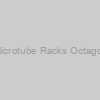 Floating Microtube Racks Octagon, Natural |
|
R021-N |
Bio Basic |
1 UNIT |
EUR 62.04 |
|
|
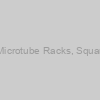 100-Well Microtube Racks, Square, Natural |
|
RH504-N |
Bio Basic |
1 UNIT |
EUR 65.02 |
|
|
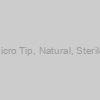 0.1-10ul Micro Tip, Natural, Sterile, 96/Rack |
|
FT225-RNS |
Bio Basic |
1PK, 96UNIT |
EUR 65.45 |
|
|
 SEALING MAT, FOR 96 WELL MICROPLATES WITH ROUND WELLS, SILICONE, NATURAL, STERILE, BULK |
|
AM-2ML-RD-S |
CORNING |
10/pk |
EUR 230.4 |
|
Description: Sealing Products; Sealing mats - Axygen |
 SEALING MAT, FOR 384 DEEP WELL MICROPLATES, SQUARE WELLS, SILICONE, NATURAL, NONSTERILE, BULK |
|
AM-384-DW-SQ |
CORNING |
10/pk |
EUR 196.8 |
|
Description: Sealing Products; Sealing mats - Axygen |
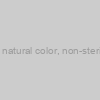 Screw cap for 2.0mL microtube, natural color, non-sterile, w/ installed O-ring, 1000/bag |
|
C3175-N |
MTC Bio |
1000 |
EUR 79 |
 0.1-10ul Micro Tip, Natural, Sterile, 96/Rack x 10 |
|
FT225-RNSB |
Bio Basic |
1PK, 960UNIT |
EUR 127.33 |
|
|
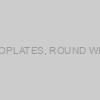 SEALING MAT, FOR 600 µL 96 DEEP WELL MICROPLATES, ROUND WELLS, SILICONE, NATURAL, NONSTERILE, BULK |
|
AM-500UL-RD |
CORNING |
10/pk |
EUR 196.8 |
|
Description: Sealing Products; Sealing mats - Axygen |
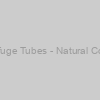 1.5ml Microcentrifuge Tubes - Natural Color, 500 pcs/pack |
|
80-1500 |
IHC World |
- |
EUR 18 |
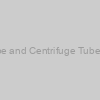 4-Ways Microtube and Centrifuge Tubes Racks, Natural |
|
R023-N |
Bio Basic |
1 UNIT |
EUR 64.18 |
|
|
 SEALING MAT, FOR 2.0 ML 96 DEEP WELL MICROPLATES, SQUARE WELLS, SILICONE, NATURAL, NONSTERILE, BULK |
|
AM-2ML-SQ |
CORNING |
10/pk |
EUR 196.8 |
|
Description: Sealing Products; Sealing mats - Axygen |
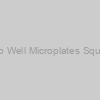 Axymats ImpermaMat for 2.0 mL 96 Deep Well Microplates Square Wells Natural Nonsterile Bulk - PK50 |
|
AM-2ML-SQ-IMP |
Scientific Laboratory Supplies |
PK50 |
EUR 623.7 |
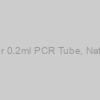 8 Strip Cap for 0.2ml PCR Tube, Natural, 120/Bag |
|
BP551 |
Bio Basic |
1PK, 120UNIT |
EUR 75.66 |
|
|
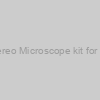 MiTeGen Kit V201 Stereo Microscope kit for MicroCrystallography: |
|
ZV20-MTGKV201 |
MiTeGen |
1 KIT |
EUR 16532 |
|
|
|
Description: MiTeGen Kit V201 Stereo Microscope kit for MicroCrystallography:- Ergonomic adjustable eyepieces- A wide array of accessories available- 7.5 to 150 x magnification range- ZEISS SteREO Discovery.V20- ZEISS SteREO Discovery.V20 body,- Human Interface Panel HIP,- Dust Protection Set M ,- Binoc Phototube Ergo Stereo 5-45 ,- Eyepiece PL 10x/23 Br foc ,- Folding Eyecup ,- Stand base Profile S,- Transmitted Light Equipment S- Cold-light source Zeiss CL6000 LED- 6200K color temperature,- control of intensity & 6 memory positions,- filter slider for 2 filters 35x26x4mm (sold separately)- Analyzer S Rotatable,- Polarizer D =84mm,- Coarse/fine drive w/column S 490mm- Mount S with 76 mm Diameter Support- Achromat S 1.0x Reo WD=63 lens |
 SEALING MAT, IMPERMAMAT, FOR 384 DEEP WELL MICROPLATES, SQUARE WELLS, CHEMICAL RESISTANT SILICONE, NATURAL, NONSTERILE, BULK |
|
AM-384-SQ-IMP |
CORNING |
10/pk |
EUR 280.8 |
|
Description: Sealing Products; Sealing mats - Axygen |
 100-1000ul Natural Tip, Natural, Sterile, 100/Rack |
|
BT222-RS |
Bio Basic |
1PK, 100UNIT |
EUR 65.93 |
|
|
 SEALING MAT, IMPERMAMAT, FOR 96 WELL MICROPLATES WITH ROUND WELLS, CHEMICAL RESISTANT SILICONE, NATURAL, NONSTERILE, BULK |
|
AM-2ML-RD-IMP |
CORNING |
10/pk |
EUR 280.8 |
|
Description: Sealing Products; Sealing mats - Axygen |
 SEALING MAT, IMPERMAMAT, FOR 2.0 ML 96 DEEP WELL MICROPLATES, SQUARE WELLS, CHEMICAL RESISTANT SILICONE, NATURAL, STERILE, BULK |
|
AM-2ML-SQ-IMP-S |
CORNING |
10/pk |
EUR 298.8 |
|
Description: Sealing Products; Sealing mats - Axygen |
 MiTeGen Kit V81 Stereo Microscope kit for Crystallography: |
|
ZV20-MTGKV81 |
MiTeGen |
1 KIT |
EUR 13998 |
|
|
|
Description: MiTeGen Kit V81 Stereo Microscope kit for Crystallography:- ZEISS Stereo Discovery V8 Microscope:- ZEISS Stereo Discovery.V8 body,- Dust Protection Set M ,- Binocular Phototube Ergo Stereo 5-45 ,- Eyepiece PL 10x/23 Br foc ,- Folding Eyecup ,- Stand base Profile S,- Transmitted Light Equipment S:- Cold-light source ZEISS CL6000 LED- 6200K color temperature, control of intensity & 6 memory positions,- filter slider for 2 filters (35 x 26 x 4mm, (filters sold separately)- Analyzer S Rotatable,- Polarizer D =84mm,- Manual focus drive fa/ Discovery,- Mount S with 76 mm Diameter Support- Achromatic S 1.0x Reo WD=63 lens |
) IncuView Integrated Microscop Shelf, 45L (For H3565-45 Only) |
|
H3565-45-LCI |
Benchmark Scientific |
1 each |
EUR 4626.96 |
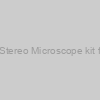 MiTeGen Kit V121 Stereo Microscope kit for Crystallography: |
|
ZV20-MTGKV121 |
MiTeGen |
1 KIT |
EUR 15282 |
|
|
|
Description: MiTeGen Kit V121 Stereo Microscope kit for Crystallography:- ZEISS Stereo Discovery V12 Microscope:- ZEISS Stereo Discovery.V8 body,- Dust Protection Set M ,- Binocular Phototube Ergo Stereo 5-45 ,- Eyepiece PL 10x/23 Br foc ,- Folding Eyecup ,- Stand base Profile S,- Transmitted Light Equipment S:- Cold-light source ZEISS CL6000 LED- 6200K color temperature,- control of intensity & 6 memory positions,- filter slider for 2 filters (35 x 26 x 4mm, (filters sold separately)- Analyzer S Rotatable,- Polarizer D =84mm,- Manual focus drive fa/ Discovery,- Mount S with 76 mm Diameter Support- Achromatic S 1.0x Reo WD=63 lens |
 100-1000ul Natural Tip, Natural, Sterile, 100/Rack x 10 |
|
BT222-RSB |
Bio Basic |
1PK, 1000UNIT |
EUR 132.59 |
|
|
) Curcumin (Natural) |
|
abx282679-100g |
Abbexa |
100 µg |
Ask for price |
) Curcumin (Natural) |
|
abx282679-20g |
Abbexa |
20 µg |
EUR 93.75 |
) Curcumin (Natural) |
|
abx282679-50g |
Abbexa |
50 µg |
EUR 125 |
) Capsaicin (natural) |
|
abx076744-100l |
Abbexa |
100 µl |
EUR 156.25 |
) Capsaicin (natural) |
|
abx076744-1ml |
Abbexa |
1 ml |
Ask for price |
) Capsaicin (natural) |
|
abx076744-200l |
Abbexa |
200 µl |
EUR 350 |
 MiTeGen Kit Stemi 305 Stereo Microscope kit for Crystallography: |
|
ZV20-MTGK305 |
MiTeGen |
1 KIT |
EUR 2589 |
|
|
|
Description: MiTeGen Kit Stemi 305 Stereo Microscope kit for Crystallography:Stemi 305 trinocular body w/ integrated camera portIncludes adapter for C-mount lensesStand K Edu w/ integrated transmissive LED cold light and polarizerSpot illuminator w/ polarizerAnalyzer (rotatable) |
) Lactacystin (Natural) |
|
2434-200 |
Biovision |
each |
EUR 379.2 |
Hyperhydration introduced in regards to the largest intracellular deposits of EB in CA3 hippocampal area, adopted by the cerebral cortex and CA1 hippocampal area with the bottom quantity of intracellular EB within the dentate gyrus. The next obvious diffusion coefficient (similar to a vasogenic edema) was discovered the primary day after hyperhydration within the cortex and within the CA1 and CA3 areas with no adjustments in dentate gyrus. It is vital to keep up/improve the flexibility of microscopists in malaria microscopy to fulfill their sufferers. illness fashions present wonderful beginning factors for in-depth investigation of illness pathophysiology utilizing novel and progressive imaging methodology.


